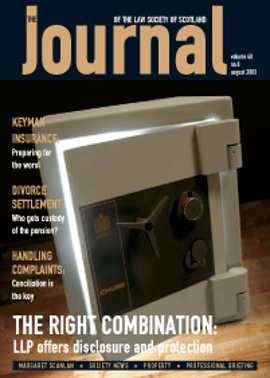Book reviews
This is a book about selling written specifically for professional firms, but that should not be a reason to skip to the next article. Tasso seeks to dispel the myth that selling is not professional by putting it within the context of a linkage and balance between developing a firm’s reputation, understanding the markets they serve, winning new business and developing business from existing clients. Many of the techniques required are the same but differences exist in their application to new and existing client situations and these are brought out within the book. She acknowledges that we are all different and that one approach or technique will not suit all; what is important is how you get inside the mind of the buyer of your service. Her aim therefore is to provide a useful review of as many different ideas and frameworks of selling as possible. Her target market is wide ranging: the book is aimed at beginners, as a reference work for those with greater existing knowledge, or to dip into on specific topics.
The first three chapters contain basic information about selling, and selling within the context of marketing, because Tasso argues that without a coherent marketing strategy, your selling will not be nearly as successful. Many firms will find the practical guidelines on preparing and implementing a marketing plan extremely useful. The theoretical content of Chapters 4 and 5 is perhaps for those with greater knowledge or a keen interest in selling. However, they do underpin much of the practical aspects of selling discussed in later chapters. Tasso first reviews models of buyer behaviours both at individual and group levels to emphasise the need for professionals to understand all the factors involved in making a sale and then outlines the most common selling frameworks, plus aspects of more recent models that are pertinent to professional services. The remainder of the book reverts to being practical in nature. All firms will find useful the comprehensive advice on the wide range of selling skills, many of which are interpersonal, that are outlined in Chapter 6. Firms who are new to competitive tendering will find invaluable the 12 step process provided in Chapter 7. Client relationship management obviously differs according to the type of client, but Tasso outlines both the objectives and benefits of such a system and how to establish the requisite internal processes within a firm. The concluding chapter addresses the requisite managerial steps that must be taken to allow the culture and attitudes to exist for selling to flourish. The appendices contain tools and checklists to speed you on your way.
Tasso achieves her aims of containing something for everyone. Some parts of the book will be beyond beginners, while other sections will be too simplistic for those with greater knowledge. However, whatever your level of interest and type of client base, it will probably contain useful information and guidance for you. It is clearly laid out and written in a straightforward and approachable style. Overall, it is a useful contribution to the management of professional firms.
In this issue
- Summertime and the living is easy
- Merits of modern partnership structure
- LLPs and PII – frequently asked questions
- Always protect your partnership in times of crisis
- A decade of disputed advice
- Far-reaching financial consequences of flawed agre
- How to make client care programmes work
- Winning the game of risk
- Cut down on account preparation time
- Mental health database
- New complaints handling system at the Society
- Muddying the waters on admissibility of hearsay ev
- Conveyancers must be aware of changes to stamp dut
- Employment briefing
- Privacy v expression: battle of Convention rights
- New protocol is major step forward on child abduct
- Website reviews
- Book reviews
- Difficulties of descriptions of exclusive garden
- Checklist for stamp duty applications






